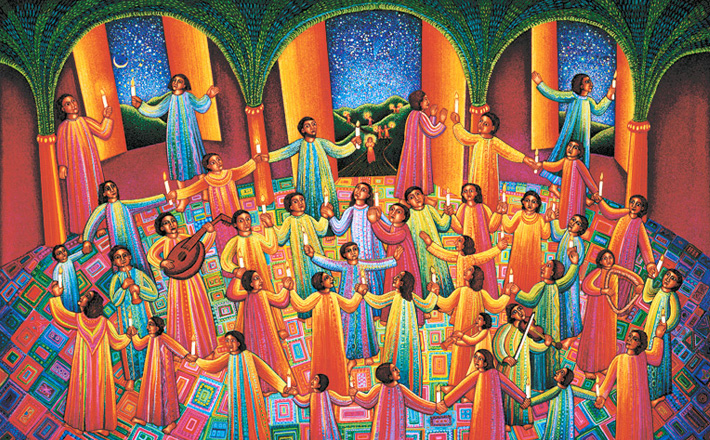Commentary on 1 Samuel 21:1-9; Mark 14:12-25
The Lord’s Supper (part 2)
The Lord’s table, with its supper of bready body and blood-red wine, is a place where we are invited, as the old table-song-summons sings it, “to come and dine, the Master calls us.”
Here again the celebration of the Lord’s Supper creates what is sometimes called “liminal space,” space which God creates using the concrete elements with a word of Promise, in order to meet us, feed us, forgive us, bring us together. And, just as importantly, this space, this place, is where we can encounter the living God—to meet, and know, be transformed by Christ Jesus.
Week 4: Aug. 29, 2021 [Lord’s Supper, part 2]
Preaching text: 1 Samuel 21:1-9; Mark 14:12-25
It is remarkable that among the so-called Synoptic Gospels, the Gospel stories that so often look the same, one of the points at which there is the most—if not difference or disagreement then at least nuance—is in the telling of the institution of the Lord’s Supper.
The order of things—from the prediction of his betrayal to what exactly happens at the table—is slightly different. What this does, it seems to me, is to emphasize, however subtly, a different meaning or purpose to this supper. In Matthew, Mark, and Luke, the Passover meal is reimagined by Jesus, but in each case the emphasis of that reimagining strikes me as a little different.
I will leave a comparative reading to the reader to draw their own conclusions, and move to what it is that Mark’s Gospel is driving at.
Mark’s Gospel situates Jesus’ institution of the Lord’s Supper between Jesus’ prediction of Judas’ betrayal (although at that point we don’t know that it’s Judas) and his prediction of Peter’s denial. In Mark there is no talk of remembrance with bread or wine, nor is the blood of the covenant linked here to forgiveness (compare Matthew and 1 Corinthians). There tension here in Mark is a matter of life and death.
In an earlier prediction, the prediction of his arrest, death, and resurrection, Jesus called upon his disciples and challenged them to follow:
“If any want to become my followers, let them deny themselves and take up their cross and follow me. For those who want to save their life will lose it, and those who lose their life for my sake, and for the sake of the gospel, will save it” (Mark 8:34-35).
Following Jesus is a matter of life and death. And neither Judas nor Peter is able, in that crucial (pun intended) moment to deny themselves and bear the cross. Sin gets in the way. Death looms larger than life, and they fear it.
In Mark, sin and death are the setting of the Lord’s Supper; as in the story of the first Passover, the Angel of Death hovers ever so near. And so in Mark it is into just this setting that Jesus lays himself out—body and bread, blood and wine—for many. This act of taking up his own cross, in the face of sin and death, is what the supper is all about: like that first Passover lamb, bringing life, and the promise of it, into the midst of death.


August 29, 2021